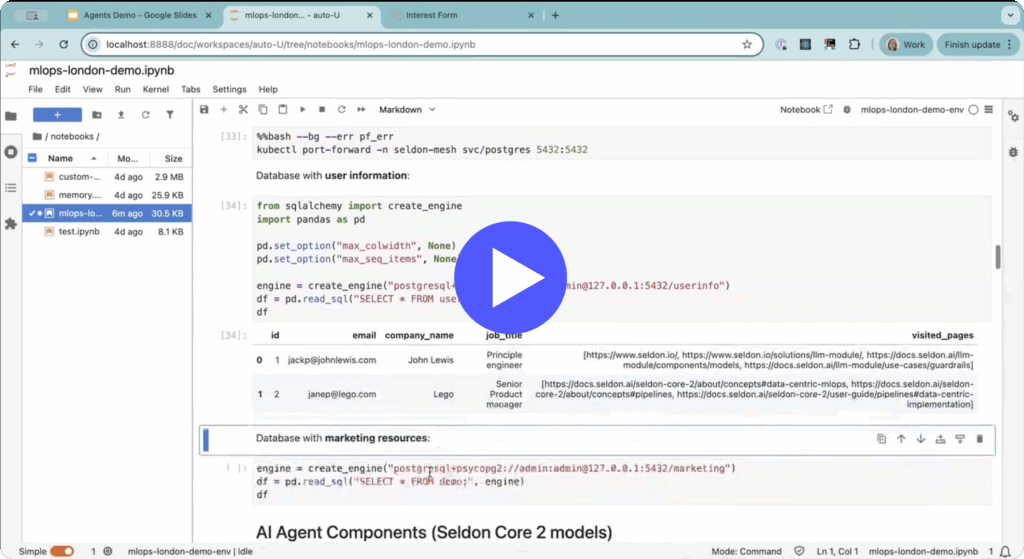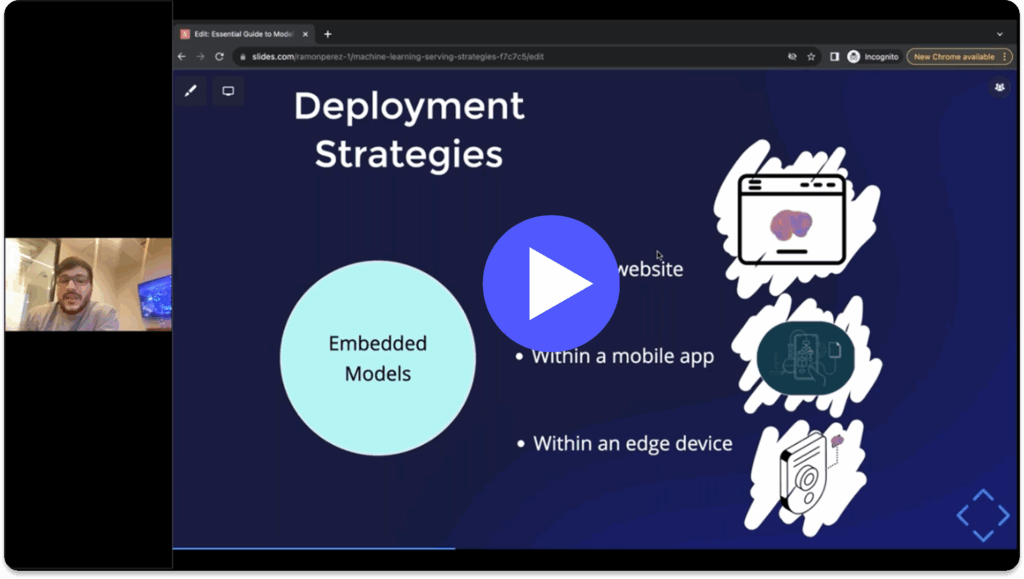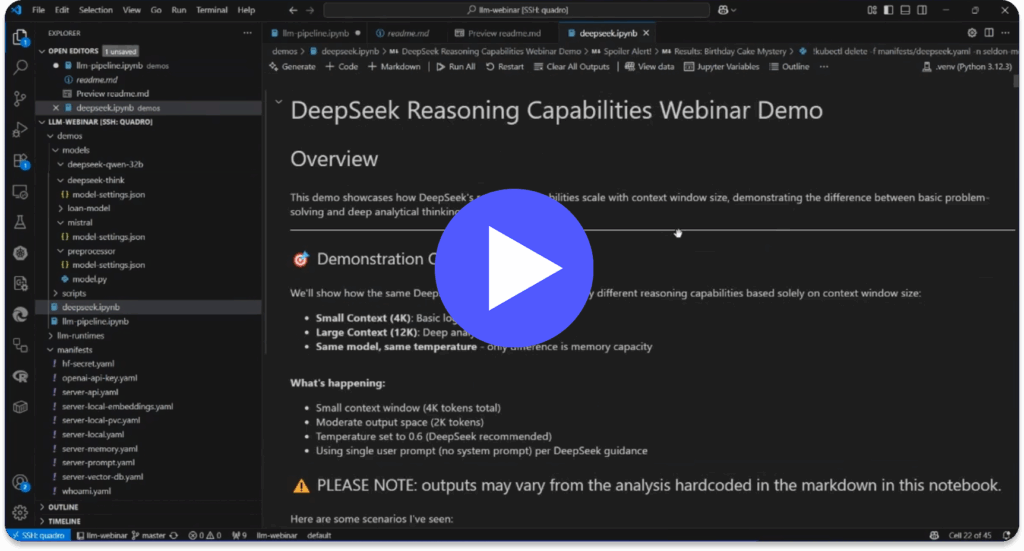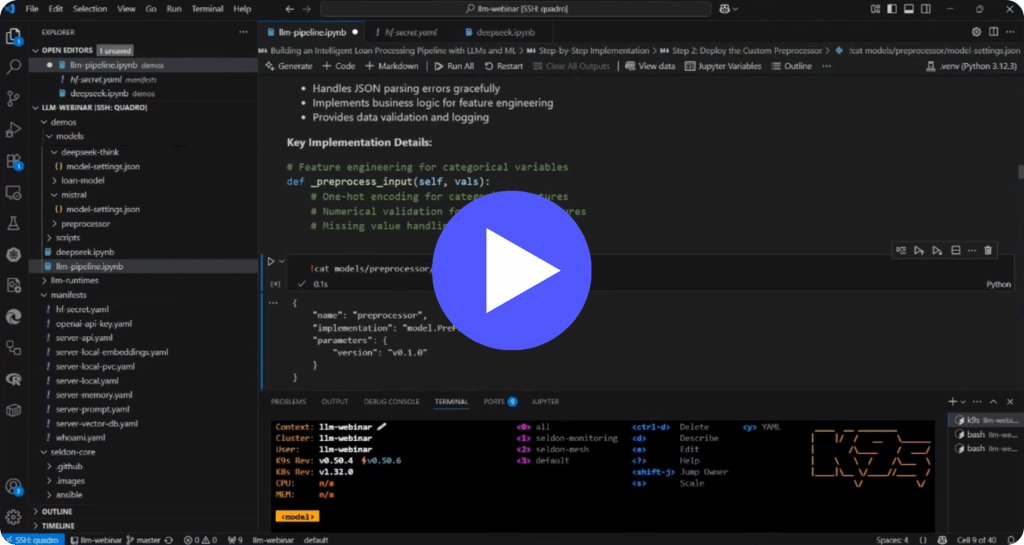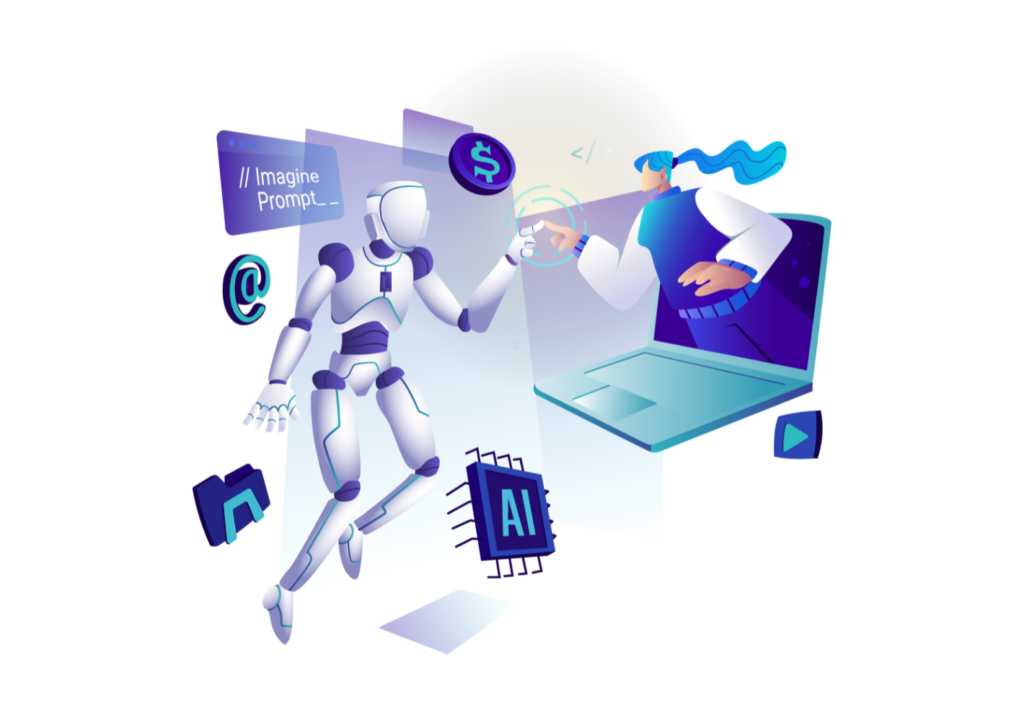Deep learning is a form of machine learning which aims to mimic and imitate the processes of the human brain through machine learning algorithms. The resulting models simulate how the human brain learns from its environment to detect, recognize and categorize objects and make nonlinear decisions. Deep learning models are also known as deep neural networks on account of their multi-layered or ‘deep’ network architecture. Once the models are deployed, deep learning algorithms will perform tasks and improve efficiency without direct human control. They are powerful tools for processing raw analogue data like audio, images or text.
It is only relatively recently that truly effective models have been developed using deep neural networks. This is because of rapid improvements in computing power and the availability of big data. The modern world is data rich. We’re collecting and processing more data than ever as our personal and working lives move into the digital realm. Computing power has exponentially improved too, so the processing power and amount of data needed to train an accurate deep neural network is now achievable.
Deep learning requires huge amounts of training data, more so than other more traditional types of machine learning. The model will get more accurate with the more data it processes, and will often be trained on millions of data points. Significant computing power is required for a deep neural network because of its multi-layered architecture. Recent advances in GPU processing in particular has helped to make deep learning a reality. Deep neural networks are inherently scalable, but will require more and more data and computing power to achieve this.
Deep learning models are already in use across a wide range of applications. The models excel at classification and categorisation tasks of complex datasets such as images, text or audio. Deep neural network architecture means increasingly complex and interdependent object features can be recognized by a system. Deep learning is already a major part of the technology behind customer recommendation systems, virtual assistants, natural language processing, and image recognition.
This guide explores the basics of deep learning, how it works, what it’s used for, and the challenges faced when developing deep neural networks.
How does deep learning work?
Deep learning has been a concept for many years, but the increase in computing power and sheer amount of available data makes it achievable today. Deep learning works by imitating the neural network of the human brain to recognize objects features of varying levels of abstraction. The deep neural networks exist as a hierarchy of many different processing layers. Raw input data passes through these hidden layers which are trained to recognise interdependent object features. The output layer predicts the likelihood that the data meets the desired representation.
Deep neural networks can process data on multiple levels of its architecture. This makes it resource-intensive, but means models can attain a highly abstract understanding of data. The model learns from its experience to improve performance and efficiency, strengthening the understanding of object features. Deep learning models are popular because of this self-sufficiency. Each hidden layer within a deep learning model is not developed by a human, instead each node learns from the data itself. Once the deep learning model has been deployed, the algorithm is self-sufficient and won’t require direct human supervision.
The deep learning process has an innate use case for feature extraction. Deep learning models can extract the features of complex raw data types like images, audio or text. The more data that passes through the model, the more accurate the layers of feature recognition. In supervised machine learning, feature extraction can be a very time-consuming process led by teams of data scientists. But deep learning models will automatically map object features, and features of these features in different layers. The result is a hierarchy of features which allows the model to understand abstract concepts.
Deep learning models can be trained with techniques from a range of different machine learning methods. This may include unsupervised, supervised, semi-supervised, or reinforcement machine learning. Deep learning needs a huge amount of data to ensure accuracy. Each time data is processed the model becomes more efficient and effective. Often deep neural networks are initially trained on labelled datasets, but can then improve accuracy and efficiency by processing raw unlabelled data.
The process is scalable, as better accuracy is achieved with more data and more processing power. However, because of the large array of data required, training can often take a long time. Because the development of deep learning models is so resource-intensive, the technique of transfer learning is often used so that existing generalised parts of pre-trained models can be reused.
What is a deep neural network?
A deep neural network is an artificial network which mimics the functions of the human brain. It is a network of interconnecting modules or nodes which process data. As the name suggests it has a deep architecture with many hidden processing layers. Each layer of the network can learn features of data which can be used to understand abstract concepts. A hierarchy of concepts within the network means different layers learn object features of varying complexity.
Data moves forward through the different layers in a nonlinear way. Between the input layer and the output layer, data will pass through a web of hidden layers to understand patterns and features within an object. Hidden layers are hierarchical, with initial features extracted from the data, before the next level extracts features of the previous feature. Multiple processing layers mean the model can learn to recognize complex and abstract objects.
The deep neural network architecture means models can make nonlinear decisions, much like the human brain. The hierarchy of layers that make up the deep neural network means data is processed through a series of layers of increasing levels of abstraction. The hierarchy is developed by the model itself from the available data. It builds a hierarchy of features, understanding high-abstract features from the related low-level features. This means the model can understand complex concepts when categorizing data or making a decision.
What is deep learning used for?
Deep learning has a range of use cases and is often used to make complex, non-linear decisions without direct human supervision. As the name suggests, deep learning models have a very deep architecture composed of a hierarchy of concepts. The model develops multiple levels of the hierarchy, building simple observations into more complex patterns.
The complexity of the model architecture reflects the complexity of tasks it can complete. Deep learning systems are generally used to automate both menial and complex tasks. Models will often be used to categorize raw and unlabelled data, and is best used with analogue file types such as audio, images or text. Deep learning models in some cases have surpassed human ability to categorize analogue data like images, so can complete tasks to a higher accuracy than humans.
Deep learning can be used to discover and map features at multiple levels of the dataset, understanding the hierarchy of features within a distribution. Because of the depth of network architecture for deep learning, models can recognize multiple levels of features. This makes it powerful at classifying and identifying a range of complex file types such as audio, text document and images.
Popular uses for deep learning models include:
- Automating complex tasks such as driving a vehicle or detecting fraudulent activity in personal banking.
- Improving human to system interaction through virtual assistants and speech recognition.
- Powering and refining recommendation systems for consumers.
- Performing image categorization and facial recognition.
- Automatically extracting features from raw unlabelled data.
Automating complex or time consuming tasks
The multi-layered aspect of a deep learning model means it’s suited to automate complex tasks. The model can consider multiple layers of object features, providing complex insight into input data. For example, transactional data in personal banking could be monitored by a deep learning model for fraudulent activity. The multi-layered architecture means data can be processed against a range of tests for fraudulent activity. This might include features such as recipient details, time, cost, and location. Deep learning models are therefore more sophisticated at tasks like fraud deduction than the linear decision making of more traditional machine learning models.
Deep learning models can make nonlinear decisions so are an integral part of automating complex tasks which may have varying environments. For example deep neural networks are being used in the development of driverless cars, being able to detect and understand road markings and traffic lights. The models improve the system’s ability to detect and react to risks on the road. Reinforcement machine learning techniques are used to improve decision-making through a positive feedback loop.
Speech recognition and virtual assistants
There is currently a major drive to improve human to computer interactions through refined text and voice control. To manually develop a model to accurately understand human input whether through text or speech would be incredibly time consuming. Human speech is incredibly varied, even within the same language. Local dialects and differences in individual’s voices can make system recognition difficult.
Modern virtual assistants are built and developed using deep learning methods. All of the main speech recognition and translation systems in use today are developed and improved through deep learning techniques. Deep learning is also a key driving force behind natural language processing systems, with its multi-layered architecture able to understand the context of a sentence.
Recommendation systems for consumers
An already-common application for deep learning models is in the recommendation of products or services to customers based on their activity or purchase history. Examples may include recommended songs or videos on an online streaming service or recommended products on an e-commerce website. Deep learning models can be used to understand users preferences and provide personalized recommendations for each user.
Deep learning models are self-sufficient once deployed. Models can be left alone to dynamically provide insight to the consumer without any human oversight. It will also learn through feedback loops to continuously improve its recommendations over time. Most of the popular recommendation systems seen on the largest e-commerce sites will be powered by elements of deep learning.
Facial and image recognition
Deep learning is the key element in the rapidly improving areas of image categorization systems and facial recognition software. Deep learning models can be trained to identify different features of an image that lead to accurate classification and identification. Image data passes through different layers of the deep neural network, each trained to recognise a feature of the target image. At the lower level these features could be the edges of an image, and the higher levels could recognise elements like eyes or noses. The model uses these layers to build complex concepts and recognise images as a whole.
Although these models are far behind the functionality of a human brain, they are often more accurate at tasks such as image categorization. In some cases models have surpassed human ability to recognize and categorize faces. Plus, raw and unlabelled data can be used to further refine models. Models can learn and extract complex features from processing huge arrays of images. The sheer amount of raw image data available for this in the modern world makes training more straightforward. Social media facial recognition on uploaded photos is a key example of deep learning models in action.
Automatically extracting features of raw unlabelled data
Feature extraction is one of the most valuable assets of deep learning. Labelled training data is the vital part of supervised machine learning techniques. However, the process of labelling datasets is resource intensive. It will require direct human involvement, which limits the scale of the datasets available.
Deep learning can automate the extraction of features from unlabelled raw data. It is best used with raw analogue data such as audio files, text documents, and images. These file types are complex, so feature extraction would otherwise need to be performed manually. This would take human data scientists many hours to perform, and naturally the amount of finished data would be limited. Manual feature extraction is in no way scalable as with deep learning. Once features are extracted by the model, data can be clustered or categorized with other data.
More traditional machine learning algorithms may be used to predict outcomes after learning the relationship between input and output data. The strength of deep learning models is the ability to understand the different features of the data and how they relate to each other as a hierarchy.
Challenges of deep learning
While having incredible potential for the evolution of machine learning, it does pose challenges to those exploring it. The main challenge being the sheer amount of resources needed to develop an effective deep neural network. Organizations must source huge arrays of training data to build an accurate deep learning model. In practice this could be millions of data points, whereas traditional machine learning techniques may need hundreds of thousands. Although models can extract data features from raw data during the learning process, data still needs to be labelled during the initial training process. Access to high-quality data in such large amounts can be a limiting factor, making it difficult to develop deep learning models from scratch.
Alongside the huge datasets needed, deep neural models require a large amount of computing power because of the multi-layered processing involved. Building deep neural networks requires a vast amount of processing power. In practice, this means the purchase and maintenance of expensive GPU units, which are well suited to the processing demands of a deep neural network.
Deep learning is innately scalable, but scaling would require more data and more processing power. All of this means that currently deep learning development from scratch is only possible by the largest organizations. Some industries may not actually have the amount of labelled data available for effective deep learning deployment.
The challenges of deep learning include:
- The requirement for a large amount of high-quality data during training can make training incredibly resource-intensive.
- Some industries may not have sufficient levels of quality data available. This acts as a barrier to the effective deployment of deep learning models.
- The unsupervised nature means transparency around decision-making can be difficult.
- The high cost of resources to process the data and scale the models, including GPU units and cloud computing.
- Accurately training deep learning models can take a long time.
Take Control of Complexity With Seldon
With over 10 years of experience deploying and monitoring more than 10 million models across diverse use cases and complexities, Seldon is the trusted solution for real-time machine learning deployment. Designed with flexibility, standardization, observability, and optimized cost at its core, Seldon transforms complexity into a strategic advantage.
Seldon enables businesses to deploy anywhere, integrate seamlessly, and innovate without limits. Simplified workflows and repeatable, scalable processes ensure efficiency across all model types, while real-time monitoring and data-centric oversight provide unparalleled control. With a modular design and dynamic scaling, Seldon helps maximize efficiency and reduce infrastructure waste, empowering businesses to deliver impactful AI solutions tailored to their unique needs.
Talk to our team about machine learning solutions today –>


